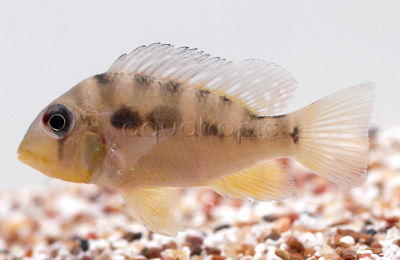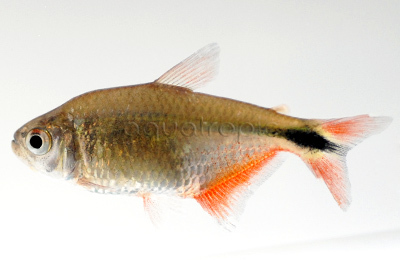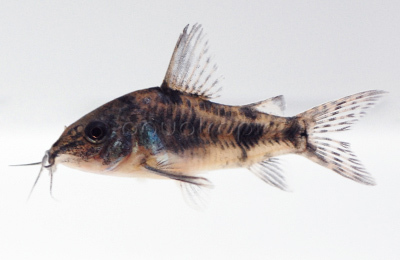The Coolest Fishes: Species That Don’t Need A Heater

It’s getting pretty wintry up here in the northern hemisphere. As temperatures take a turn for the worse, it becomes increasingly important to have a properly functioning heater to keep those piscine pets warm and toasty. While we might have to suffer through with months of coats and scarves, this is a problem that most tropical fishes never experience. If you were a Cardinal Tetra or an Altum Angelfish, odds are that you’d be swimming around in pleasantly warm waters for your entire life, completely unaware of what “cold” even is.
Of course, there are plenty of species that originate from parts of the world that do experience large seasonal fluctuations in their environment. While the tetras of the Orinoco River might be blessed with perpetual warmth, those from the more southerly waters of Uruguay or Argentina will have to deal with both the heat of summer and the chill of winter. The same can be said for some of the species which originate from the highlands of Asia, and several popular aquarium fishes are native to temperate waters on the continent. And, of course, nearly any species from North America or Europe would fall into this category. So let’s take a look at some of more popular choices for an unheated fish tank.

Balzani Cichlid (Gymnogeophagus balzani)
The small South American country of Uruguay sits at a latitude that brings scorching summers and frigid winters, making nearly any fish from these waters perfect for a subtropical biotope. An especially nice example is the Balzani Cichlid, which comes from the Uruguay River, as well as the nearby Paraná River of Paraguay and Southern Brazil. This fish belongs to the eartheater lineage, so, if kept on a sandy substrate, you can expect to see it regularly take mouthfuls of sand as it searches for tasty worms, insects and crustaceans. Many aquarists recommend providing a cool period to mimic the natural cycle experienced each year. Males of this species grow relatively large, at around six inches, eventually developing a gigantic rounded head. They can be extremely territorial towards one another, so, for this reason, it is best to keep just one per tank, though females are fine together in groups. There are several other members of this genus that are equally fascinating (and cold-loving) in the home aquarium, but these are rarely available outside of specialist breeders.

Buenos Aires Tetra (Hemigrammus caudovittatus)
The same river systems that the Balzani Cichlid calls home are also where we find the Buenos Aires Tetra. If you’ve ever had the pleasure of visiting the Argentine capital in the winter, you’ll already be familiar with how chilly it can get, with sub-freezing temperatures being a regular occurrence. Obviously, any tetra that can survive in such a harsh climate must be a hearty creature, and you’ll find that H. caudovittatus has a reputation for being virtually indestructible. Much like with the Rosy Barb, you’ll want to keep this feisty fish in large numbers to tone down its aggressive tendencies. For another tetra offering from these same waters, consider the Bloodfin Tetra (Aphyocharax anisitsi)... just be sure not to confuse it with its similarly named tropical cousin, the Glass Bloodfin Tetra (Prionobrama filigera).

Peppered Cory (Corydoras paleatus)
And for a bottomfeeder from subtropical South America, you can’t go wrong with the Peppered Cory. It also comes from around Uruguay and Argentina, and it likes the cold so much that breeders often resort to dropping ice cubes in its aquarium to stimulate it to breed. If you’re a subtropical catfish, you’ve got to keep warm somehow, right? There are even reports of it swimming happily along beneath a layer of ice.

Mosquitofish (Gambusia affinis)
The aquatic fauna of North America is perfect for unheated fish tanks, but, sadly, few species are widely available. The Rosy Minnow (Pimephales promelas) is easily the most frequently seen species, since it is bred in untold numbers as a feeder fish. But don’t let that stop you from trying this charming little fish out; males are particularly peculiar, developing a balzani-like swelling to their head. For something a bit out of the ordinary, there’s the Mosquitofish. This small silvery fish is a relative of the guppy that can be found all along the Atlantic coastline, as far north as Delaware! Naturally, it also makes for a fantastic pond fish that will help eliminate any resident mosquitoes.

Dojo Loach (Misgurnus anguillicaudatus)
Any fish that can survive both in Siberia and in a tropical fish tank must be pretty adaptable. The Dojo Loach is native to a wide swath of Asia, but, since being introduced into the aquarium trade, it has been able to colonize across the planet thanks in no small part to aquarists releasing their piscine pets. (Note: don’t ever do this!) Nowadays, you can find this eel-like species swimming year round in the Great Lakes and beyond, a testament to just how cold-tolerant it is. You’ll also commonly see Misgurnus referred to as the Weather Loach, which alludes to its habit of gulping air during periods of air pressure change (which tends to happen when storms are approaching).